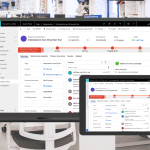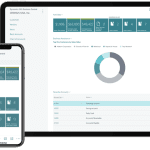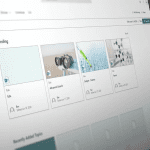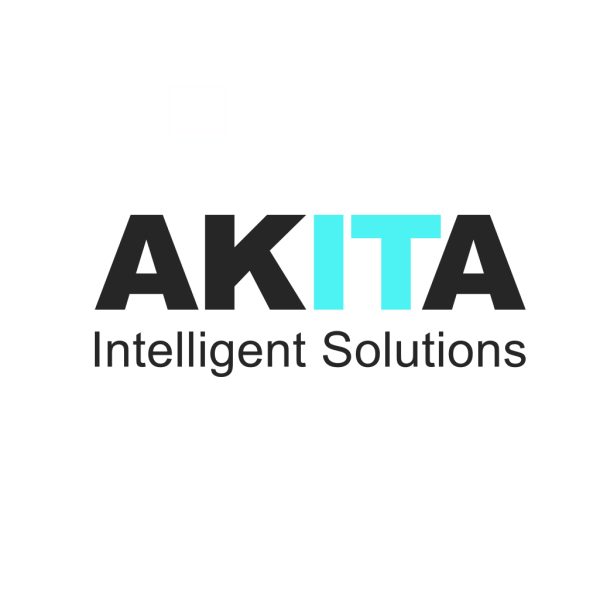
Microsoft Dynamics 365
Powering business success with CRM solutions & Support
CRM Innovation That Fuels Success From An Experienced Dynamics 365 Partner
Supercharge your operations with Microsoft Dynamics 365 CRM solutions from Akita.
As a leading Microsoft developer, we assist organisations with implementation and provide consultancy and support to ensure a healthy return on investment. We’re even recognised as a Crown Commercial Supplier for our Microsoft Dynamics CRM and ERP solutions.
Microsoft Dynamics 365 has the functionality to automate many of the standard processes that currently waste valuable time. This enables organisations to create more efficient workflows and adopt a more streamlined approach to general operations.
With our in-house expertise in SharePoint, Power Platform and wider Microsoft 365 solutions, we offer a comprehensive service to cover all aspects of your business needs.
Speak to one of our experts about a Dynamics 365 implementation today:
What Are The Main CRM Modules Within Microsoft Dynamics 365?
How Dynamics 365 CRM Can Be Customised To Fit Business Processes

Dynamics 365 CRM is built to be shaped around your business processes rather than forcing you to adapt to rigid software logic. Each application is modular and function-specific – covering sales, marketing, field service, customer service, warehousing and project management – allowing you to customise only what you need and scale as your requirements evolve.
Workflows, data structures, dashboards, security roles and automations can all be configured to reflect your organisation’s existing processes and approval paths. Applications can operate independently or as a unified platform, enabling joined-up working across departments and delivering richer business intelligence.
Because Dynamics 365 sits within the Microsoft ecosystem, it connects natively with tools such as Outlook, Teams, SharePoint and Power Platform, while also integrating with third-party line-of-business applications like finance and marketing automation platforms. This creates a single source of truth and reduces manual effort across the operation.
You can explore how these capabilities translate into real business outcomes in our case studies:
Our WorkWhat Are The Benefits Of Microsoft Dynamics 365?
Microsoft Dynamics 365 benefits organisations by centralising and standardising functions and operations from a single platform.
With one location and way of working, processes become faster, reporting becomes easier, and patterns and trends become visible.

As a result, organisations can adapt procedures to better fit each other, making for more streamlined operations.
Whether it’s accurate sales pipeline data or a complete record of customer service interactions, Dynamics 365 offers a single source of truth.
Better collaboration is also a major benefit within Dynamics 365. Teams that were previously disconnected, now have instant access to shared data and reporting on the go, helping them have smarter engagements and work more efficiently.
Want more information?
Let's ChatMicrosoft Dynamics 365 Packaged Deployments
Our packaged deployments offer fixed-price, fast deployments including all the essential configuration and training to get your organisation up and running with the new system. Costs can be spread over a payment plan and implementations are designed to cause minimal business disruption.
Business Central (ERP) From £4,750
Packaged implementation of Business Central as a finance solution:
ViewD365 Sales From £3,500
Implementation of Dynamics 365 Sales as a base CRM system in as little as five days.
ViewD365 Marketing From £3,500
Packaged implementation of Dynamics 365 Marketing to power marketing automation in as little as five days.
ViewD365 Customer Service From £3,500
Implementation of Dynamics 365 Customer Service in as little as five days.
ViewD365 Field Service From £4,900
Deployment of Dynamics 365 Field Service to manage remote operations in as little as seven days:
ViewCustom D365 Deployments
Whether you’re moving to Dynamics 365 as a brand-new solution, or from a legacy solution, our consultants can assist. Contact us today with your requirements:
Contact UsOur Wider Microsoft Capabilities
As Microsoft experts, we often undertake Dynamics 365 projects that combine multiple solutions such as Microsoft ERP, SharePoint and Power Platform.
Find out more about our wider capabilities:

Business Central
Tools for simplifying finance and operations management, as well as increasing workplace productivity

SharePoint
Centralised data management, company communication sites and automation solutions

Power Pages
Provide users with an interactive, simple and intuitive interface to engage with your business

Power BI
Advanced data visualisations tools for enhanced processing and reporting

Why Choose Akita As Your Dynamics 365 Partner?
A UK-based business applications developer and Microsoft partner, we assist organisations worldwide with their Microsoft Dynamics 365 requirements.
With a team of experienced CRM and ERP consultants – as well as wider SharePoint and Power Platform experts – we undertake both packaged deployments and custom development and expansion work.
We operate across the UK, supporting organisations from the following locations:
London: Tower 42, 25 Old Broad Street, London EC2N 1HN
Kent: Unit 15 Nepicar Park, London Road, Wrotham, Kent, TN15 7AF
Leeds: 2 Wellington Place, Leeds LS1 4AP
We’re also fully equipped to deliver all necessary wrap-around services, including consultancy, licensing and support.
To discuss Microsoft Dynamics CRM or ERP solutions, please get in touch:







